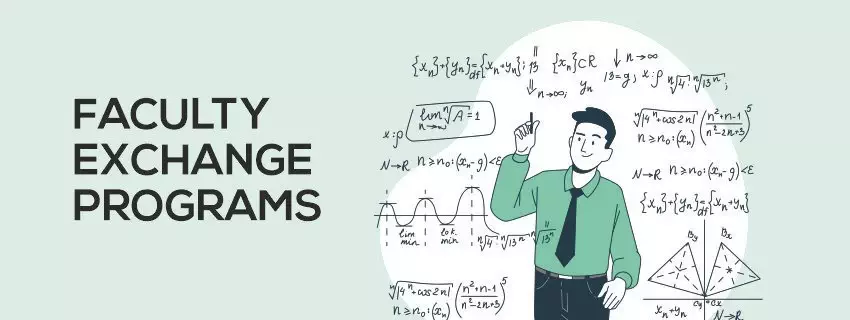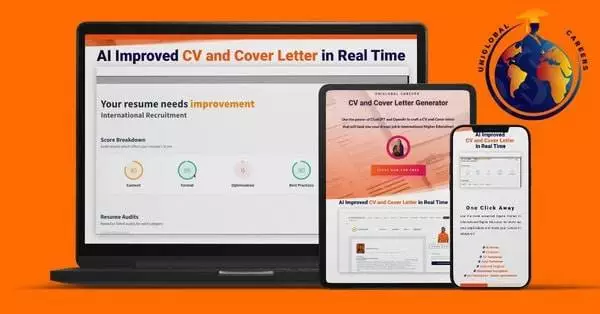Faculty exchange programs have been a part of higher education for many years, allowing scholars from different universities and countries to exchange knowledge, share expertise, and collaborate on research projects. While these programs have traditionally relied on manual processes, there is growing interest in using artificial intelligence (AI) to streamline and enhance the exchange experience. In this article, we explore the benefits of AI in faculty exchange programs.
Understanding Faculty Exchange Programs
Before we dive into the role of AI in faculty exchange programs, it’s important to understand what these programs entail and how they work.
Definition and Purpose of Faculty Exchange Programs
Faculty exchange programs allow scholars from one institution to visit another institution for a specified period of time, usually ranging from a few weeks to a full academic year. These programs are designed to promote collaboration, cultural exchange, and the sharing of knowledge and ideas.
Faculty exchange programs have been in existence for over a century. They have played a significant role in fostering international cooperation and promoting academic excellence. The programs provide opportunities for scholars to gain new perspectives, learn new skills, and form lasting professional relationships.
Faculty exchange programs are also an excellent way for universities to enhance their global reputation. By participating in these programs, universities can showcase their academic programs, research capabilities, and cultural diversity to the world.
The Traditional Faculty Exchange Process
Traditionally, faculty exchange programs involve a manual matching process, where universities review applications from potential exchange scholars and manually match them with counterparts at partner universities. The process can be tedious, time-consuming, and prone to errors. Communication during the process can also be slow, and there can be delays in making and confirming arrangements.
Despite the challenges, many universities continue to rely on traditional faculty exchange processes. This is because the manual matching process allows for a high degree of customization and personalization. It also allows universities to ensure that the exchange scholars are a good fit for the host institution.
However, there are also drawbacks to the traditional faculty exchange process. The process can be subjective, and there is a risk of unconscious bias in the selection process. Additionally, the process can be slow and inefficient, which can be frustrating for both the exchange scholars and the host institutions.
As a result, many universities are turning to AI-powered solutions to streamline the faculty exchange process. These solutions use algorithms and machine learning to match exchange scholars with host institutions based on a range of factors, including research interests, teaching experience, and cultural background.
The Role of Artificial Intelligence in Faculty Exchange Programs
Faculty exchange programs are an excellent way for scholars to broaden their horizons, gain new perspectives and experiences, and collaborate with colleagues from around the world. However, managing the logistics of these programs can be challenging, time-consuming, and prone to errors. Fortunately, with the help of artificial intelligence (AI), universities can streamline the faculty exchange process and enhance the exchange experience for all involved.

AI-driven Matching Algorithms
Matching exchange scholars with their counterparts is a critical aspect of the faculty exchange process. Traditionally, this has been done manually, which can be time-consuming and prone to errors. However, with the help of AI-driven matching algorithms, universities can match exchange scholars with their counterparts more accurately, efficiently, and quickly.
These algorithms take into account a range of factors, such as research interests, geographic location, and language proficiency. By using machine learning and predictive analytics, universities can identify the best matches for exchange scholars, based on their preferences and the needs of the host institution. This not only saves time but also ensures that exchange scholars are matched with counterparts who share their interests and goals, leading to more productive and rewarding exchanges.
Streamlining the Application Process
The application process for faculty exchange programs can be complex, involving multiple steps and documents. However, with the help of AI, universities can streamline this process, reducing manual data entry and automating routine administrative tasks.
For example, institutions can use AI-powered software to process application materials, verify credentials, and generate contracts and other documents. This can save time for both exchange scholars and university staff, allowing them to focus on more important tasks, such as preparing for the exchange itself.
Enhancing Communication and Collaboration
Effective communication and collaboration are essential for successful faculty exchanges. However, language barriers, time differences, and other factors can make communication challenging. Fortunately, AI-powered communication tools can help to facilitate communication among exchange scholars, host faculty, and administrators.
For example, exchange scholars and their hosts can use chatbots to ask and answer questions about logistics, housing, and other arrangements. These chatbots can be programmed to understand multiple languages, making communication easier for everyone involved. AI can also help to facilitate online collaboration through document sharing and real-time translation services, allowing exchange scholars to work together on research projects and other initiatives.
In conclusion, AI has the potential to revolutionize the faculty exchange process, making it more efficient, accurate, and rewarding for all involved. By leveraging the power of AI-driven matching algorithms, streamlining the application process, and enhancing communication and collaboration, universities can create more successful and impactful faculty exchange programs.
Benefits of AI in Faculty Exchange Programs
The benefits of using AI in faculty exchange programs are many. Let’s explore a few of them.

Improved Efficiency and Time Savings
AI-powered matching algorithms and streamlined administrative processes can save significant time for both exchange scholars and university staff. This can allow for more efficient planning and execution of exchange programs.
For instance, AI can be used to automate the process of matching exchange scholars with counterparts at partner universities. This can significantly reduce the time and effort required to identify suitable matches, and can ensure that the matching process is more accurate and efficient.
Additionally, AI can be used to automate administrative tasks such as visa processing, travel arrangements, and housing arrangements. This can further reduce the workload of university staff and allow them to focus on more strategic tasks.
Increased Accuracy in Matching Faculty Members
AI-driven matching algorithms can be more accurate in matching exchange scholars with counterparts at partner universities, taking into account a wide range of factors. This can lead to better collaboration and more successful exchange experiences for all parties involved.
For example, AI can be used to consider factors such as research interests, teaching experience, language proficiency, and cultural background when matching exchange scholars. This can ensure that the matches are more suitable and can lead to more meaningful collaborations.
Enhanced Personalization and Customization
AI can help to personalize and customize exchange programs based on the individual needs and preferences of exchange scholars. For example, by using AI-powered chatbots, exchange scholars can receive personalized recommendations for housing and cultural activities based on their interests and preferences.
Moreover, AI can be used to provide personalized language learning resources to exchange scholars based on their proficiency level and learning style. This can help them to better integrate into the host culture and make the most of their exchange experience.
Facilitating Cross-Cultural Learning Opportunities
AI can help to facilitate cross-cultural learning opportunities by providing real-time translation services and enabling exchanges among scholars from different linguistic backgrounds. This can foster greater understanding and appreciation of diverse cultures.
For instance, AI-powered translation tools can be used to facilitate communication between exchange scholars who speak different languages. This can help them to better understand each other’s perspectives and collaborate more effectively.
Encouraging Interdisciplinary Collaboration
By using AI to match scholars across disciplines, exchange programs can foster interdisciplinary collaboration and generate new avenues for research and scholarship. This can lead to innovative ideas and solutions that benefit society as a whole.
Furthermore, AI can be used to identify areas of common interest and potential collaboration between scholars from different disciplines. This can help to break down silos and encourage more interdisciplinary research and teaching.
In conclusion, the benefits of using AI in faculty exchange programs are numerous and can lead to more efficient, personalized, and successful exchange experiences for all involved. As technology continues to evolve, we can expect to see even more innovative uses of AI in this field.
Real-World Examples of AI in Faculty Exchange Programs
Faculty exchange programs have been around for decades, allowing scholars to travel to different universities to teach, conduct research, and collaborate with colleagues. However, with the advent of artificial intelligence (AI), these programs have become even more efficient and effective. Let’s take a closer look at some real-world examples of AI in faculty exchange programs.
Case Study: University A’s AI-driven Faculty Exchange Program
University A, a leading research institution, recently implemented an AI-driven faculty exchange program that uses machine learning algorithms to match exchange scholars with counterparts at partner universities. The program has resulted in significant time savings and increased collaboration among scholars across disciplines.
The program works by analyzing the research interests, areas of expertise, and availability of scholars from both the host and partner universities. The AI algorithm then matches scholars based on their compatibility, ensuring that the exchange is mutually beneficial and productive.
Since the implementation of the AI-driven program, University A has seen a 30% increase in the number of exchange scholars and a 20% increase in the number of collaborative research projects. The program has also helped to strengthen partnerships with partner universities and has led to the development of new research initiatives.
Case Study: University B’s AI-enhanced Collaboration Platform
University B, a global university with campuses in multiple countries, uses an AI-enhanced collaboration platform to facilitate exchanges among scholars from diverse linguistic backgrounds. The platform uses real-time translation services and other AI tools to enhance cross-cultural communication and collaboration.
The platform allows scholars to communicate with each other in their native languages, with the AI technology providing real-time translation. This has helped to break down language barriers and has enabled scholars to collaborate more effectively. The platform also uses AI to analyze the research interests and areas of expertise of scholars, making it easier for them to find potential collaborators and research partners.
Since the implementation of the AI-enhanced collaboration platform, University B has seen a 25% increase in the number of international collaborations and a 15% increase in the number of joint research projects. The platform has also helped to foster a more inclusive and diverse research community, with scholars from different linguistic and cultural backgrounds working together to solve complex problems.
Overall, AI has the potential to revolutionize the way that faculty exchange programs operate, making them more efficient, effective, and inclusive. As universities continue to invest in AI technology, we can expect to see even more innovative and impactful programs emerge in the years to come.
Conclusion
The benefits of using AI in faculty exchange programs are clear. By streamlining administrative processes, enhancing communication and collaboration, and facilitating interdisciplinary exchange, AI can help to create more efficient, successful, and enriching exchange experiences for scholars and universities alike.


